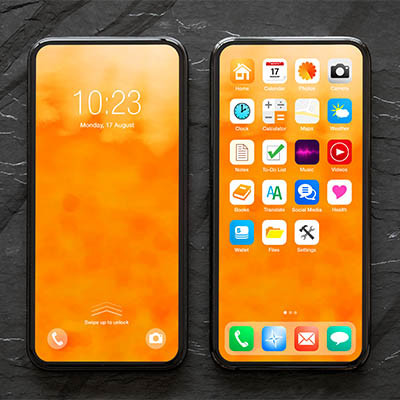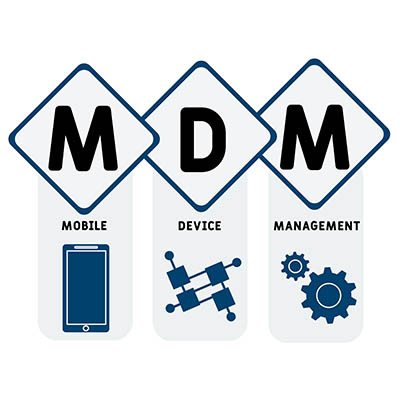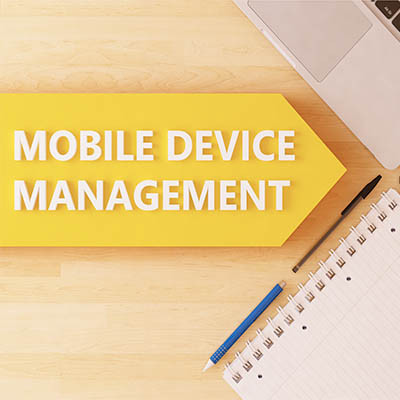Authentication is a tricky thing for businesses. While people want to be secure, they also want to make that security as convenient as possible. Developments involving solutions like Windows Hello, a biometrics authentication system used by Microsoft, have been pushing this trend forward. Let’s take a look at Windows Hello and see what kinds of authentication features it brings to the table.
Advanced Computers Blog
Technology is one of those parts of your operational infrastructure that plays a massive role, even if you don’t realize it. In fact, you’ve been using all of the standard fare for business technology, such as computers, server units, and networking components for quite some time. All technology must eventually be replaced though, so it’s critical that your company has an established approach to make this happen in the most seamless and least stressful way possible.
All businesses utilize software to a certain extent, but not all companies have the same needs. That being said, there are certain types of software that all businesses can benefit from, regardless of industry or service offerings. We’ve put together a list of business software solutions that companies can utilize to improve operations.
Your mobile device management strategy is going to bleed into every other part of your business, especially in the realms of security and productivity. It is of critical importance that you ensure that your mobile device management platform is working toward your company’s operational goals, but it can be challenging at times to look at this type of technology with its many complications. Let’s dive into what makes for a solid MDM platform.
All businesses rely on email, but we will admit that it’s not the sexiest technology solution out there. It’s more of a necessity rather than something you might get excited about implementing for your company. Still, this does not lessen its importance, so you should give it the same care you would any other aspect of your business’ IT infrastructure.
Businesses depend on their communication infrastructures to work with clients, vendors, and their staff. Depending on the specific needs of the company, a business might implement any number of communication solutions, all of which have various strengths, weaknesses, and uses. We’ll walk you through some of the most common communication solutions, as well as why you might want them for your company.
With so many companies forced to transition to remote technology, it’s no wonder that many questions regarding the use of mobile technology—particularly laptops and smartphones—have risen to the surface. This is especially the case for data sharing between devices and privacy. Let’s take a look at the mobile device’s role in the remote workplace, as well as how many companies have chosen to ensure that they are not putting their data on the line with them.
Being future-minded means that you are always on the lookout for the next big thing and how it might affect your business, be it technology or otherwise. Many developing technologies might seem like they will never see the light of day, but the reality is that many of them do have the potential to see business applications in some capacity. Let’s take a look at some of these oddball concepts and how they might transition to business use in the future.
Let’s face it: with so (so) many streaming platforms now available for us to binge a trendy show or revisit a favorite movie on, technology and entertainment have become inexorably linked. When you really think about it, the technology that makes these streaming services possible is truly impressive. Let’s go over this technology together.
VoIP, the shortened form of Voice over Internet Protocol, can be considered the latest and greatest in telecommunication, a solution that is far superior to traditional landlines. Some businesses have embraced this technology with open arms, whereas others still cling to their landlines like their lives depend on it. At the end of the day, relying on your landline when a better solution exists is no different from throwing money away.
Your landline telephone may have once been a prominent part of your business’ communication infrastructure, but chances are that it’s fallen on hard times since you last used it. In fact, you might be surprised to find that there are quite a few arguments against using a landline for your organization’s phone system, especially with more modern tools eclipsing it in usefulness.
Businesses use a lot of technology to keep themselves competitive and operationally efficient. One way that organizations use to make their technology infrastructure more accessible is through the use of virtualization. Let’s discuss what virtualization is, how it benefits businesses, and some examples of how you might consider leveraging virtualization to your company’s benefit.
Discord is not considered a business-grade solution, but it does have some merits in terms of communications and collaboration. Let’s discuss some of the ways that this platform can be used to help your business. After all, there is a reason why it’s so beloved with its user base, so maybe you will find some value in it.
It comes as no surprise that IT maintenance and management is a pain point for small businesses. Perhaps they don’t have the resources to perform in-house maintenance because they lack the funds to hire trained technicians, a practice which leads them to rely on existing resources to make it happen. Unfortunately, this leads to inconsistent maintenance at best, a practice that can be both dangerous and wasteful in the long term. We’re here to tell you that not only is proactive maintenance important, but that remote maintenance is the best way to make it happen.
Businesses have long used telephony solutions of some sort, but the traditional landline is an archaic piece of technology in the modern office. You can take your organization to the next level with a more dynamic and flexible solution, one that has the same features without all of the headaches associated with traditional telephone systems. A Voice over Internet Protocol (VoIP) solution can completely change your communications for the better.
Implementing new technology into your IT infrastructure is not something that can be done without serious consideration. If you skip the planning process, the last thing you should expect is for things to work out in your favor. Start by weighing your organization’s specific needs, then consider all of the ways that those needs can be met. Today we are going to discuss how you can make all of this happen in the easiest way possible.
For the past year, remote work has been basically the only option for some businesses. If the pandemic has proven anything, it is that all of our preconceived notions of remote work being impossible for certain industries and sectors are simply not true. Most businesses can leverage remote work in some capacity, so in a post-COVID world, it is your responsibility as a business owner to act on the many benefits that remote work can pose for organizations like yours.
In 2015, Microsoft seemingly confirmed that Windows 10 would be the last version of Windows. This prompted users and industry professionals to believe that we would not be receiving Windows 11 anytime soon. With a major update to the Windows 10 operating system on the horizon, some folks aren’t sure what to think. Still, what does this update to Windows 10 mean for your business?




















